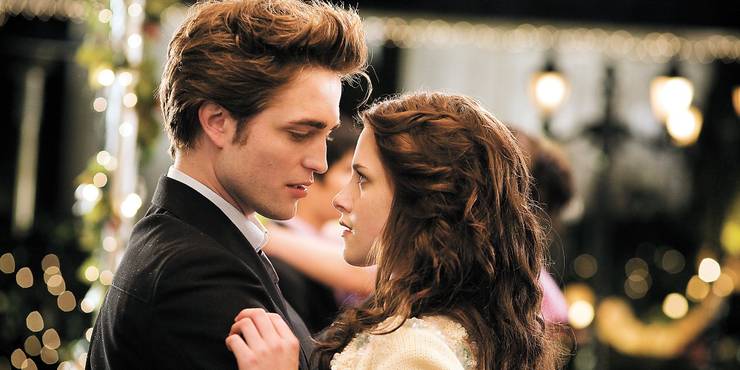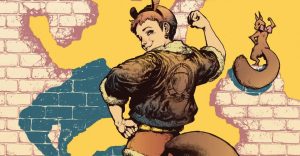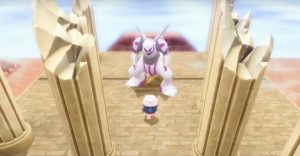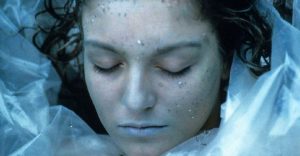Twilight: Everything Changed From Breaking Dawn’s Original Plan

The two-part finale of the Twilight saga may have divided fans and critics, but could Breaking Dawn have been better if the movie followed its original plan? Released in 2008, Lords of Dogtown director Catherine Hardwicke’s Twilight was a huge hit with teenage audiences and made overnight stars of its leads Kristen Stewart and Robert Pattinson. Although Hardwicke didn’t return for the sequels, the success of Twilight ensured that the rest of author Stephenie Meyer’s best-selling paranormal romance saga would soon receive big-budget adaptations too.
Between 2008 and 2012, five Twilight movies were released in the series, with each sequel doing impressive business at the box office despite critics largely dismissing the franchise. Twilight had trouble holding onto directors since the original movie. Despite the success of 2010’s third movie, Eclipse, the studio opted to replace 30 Days of Night director David Slade with Chicago’s Bill Condon for the final film in the franchise.
However, the fourth movie Breaking Dawn soon became two movies, with the cast renegotiating their contracts due to fans insisting that the doorstopper final novel could not be compressed into one movie. When it was finally released, Breaking Dawn was another financial success for the series. Granted, the two-part ending to the Twilight series was contentious among fans due to Breaking Dawn’s many plot holes, and the final film(s) of the franchise could have been better—or worse—if the creators stuck to their very different original plans.
Gus Van Sant’s Breaking Dawn

Believe it or not, the experimental director who brought audiences the desert-set existential drama Gerry and the school shooting movie Elephant was seriously considered for the final film in the Twilight saga. At the suggestion of star Robert Pattinson, Gus Van Sant’s name was put forward for the job of directing Breaking Dawn, and what might surprise readers more is the fact that the director was interested in the job. Van Sant auditioned to direct the movie, his confidence bolstered by the news that he was reportedly Pattinson’s perfect choice for the job. However, the helmer admitted that the “nerve-racking” audition process proved that his style wouldn’t work for the fantasy film series. Hard Candy’s David Slade may have made Eclipse the most underrated Twilight movie despite being a seemingly odd fit for the franchise. Still, evidently, the meditative creator of My Own Private Idaho was not cut out for directing the campy antics of the immortal vampire royalty, the Volturi.
A One-Movie Breaking Dawn

Twilight series author Stephenie Meyer admitted that a two-part movie would be the only way to bring the saga’s final novel Breaking Dawn to life onscreen. Then delays in negotiating the cast’s contracts together ensured that the creators seriously considered condensing the massive novel into one (presumably incredibly overlong) movie before cooler heads prevailed. Not a lot was disclosed by the creators, but in March 2010, it was widely reported that Twilight’s Taylor Lautner, Robert Pattinson, and Kristen Stewart’s four-film contracts made a two-part Breaking Dawn unlikely, only for the studio to announce by June of the same year that they would begin shooting the two-part movie by the end of 2010.
The fees that each star was able to command increased massively since the original Twilight, thanks to the success of the series, but the higher price tag of Lautner, Pattinson, and Stewart was not enough to deter the studio from splitting Breaking Dawn’s narrative. The decision was likely a wise one, as Breaking Dawn Part 1 ends on Bella’s gruesome childbirth ordeal, and the final Twilight sequel can as such focus its considerable runtime on the Renesmee/Volturi plotline. Attempting to combine both stories into one movie would have created a cluttered, overstuffed story. Given how little screen time fan favorites like the Romanian coven and Rami Malek’s Benjamin received in the finished Breaking Dawn Part 2, a tighter edit was the last thing the two-part finale needed.
An R-rated Breaking Dawn

The source novel’s infamous vampire baby birth scene was originally going to earn Breaking Dawn an R-rating, a first for the teen franchise. Fans demanded that the movie version live up to the novel’s gory scene, but this led to a problem for the Twilight producers, who were aware that the franchise’s increasingly broad fanbase included many pre-teen viewers. Younger viewers would likely be permitted to see a PG-13 movie, but an R-rating would be a bridge too far for many families and would fly in the face of the chaste appeal of Twilight, whose romantic story was a more family-friendly affair than, for example, HBO’s gorier, sexier TV hit True Blood.
Attempting to balance fan demand for an appropriately gruesome birthing scene and a reasonable rating for the two-part movies, the producers of Breaking Dawn decided to take the middle ground approach, maxing out the gore that could be achieved with a PG-13 rating. The decision proved pivotal to the success of the first movie. The finished Breaking Dawn Part 1 featured no “puking up blood,” but as a result, the gruesome birthing scene works as a piece of effective body horror thanks to superb sound design and canny cutting. A gorier, Cronenberg-esque R-rated cut of the scene would have been out of place in the Twilight movies, and the cut that Breaking Dawn Part 1 went with balanced implication and depiction with surprising grace and effectiveness.
Breaking Dawn In 3D

In an idea originally proposed for Eclipse, Breaking Dawn producer Wycke Godfrey wanted to use 3D to differentiate the two halves of the final Twilight story. Breaking Dawn Part 1 would have been a conventional 2D blockbuster, while the second half of the story would have been shot with Avatar’s “real 3D” technology to denote that Bella was now a vampire rather than a human. Godfrey wanted real 3D technology as the producer did not want to convert a traditionally shot Breaking Dawn Part 2 to 3D in post-production. Alas, despite how much this might have aided the action of the final movie’s dramatic final battle sequence, 3D technology was not used in the production of Twilight’s final film outing. Thus viewers received the 2D, two-part Breaking Dawn in 2012, ending Twilight’s five-film run on a divisive note that could have been a goofy 3D-aided single movie mess, but also could have been an R-rated Gus Van Sant film.
About The Author


















